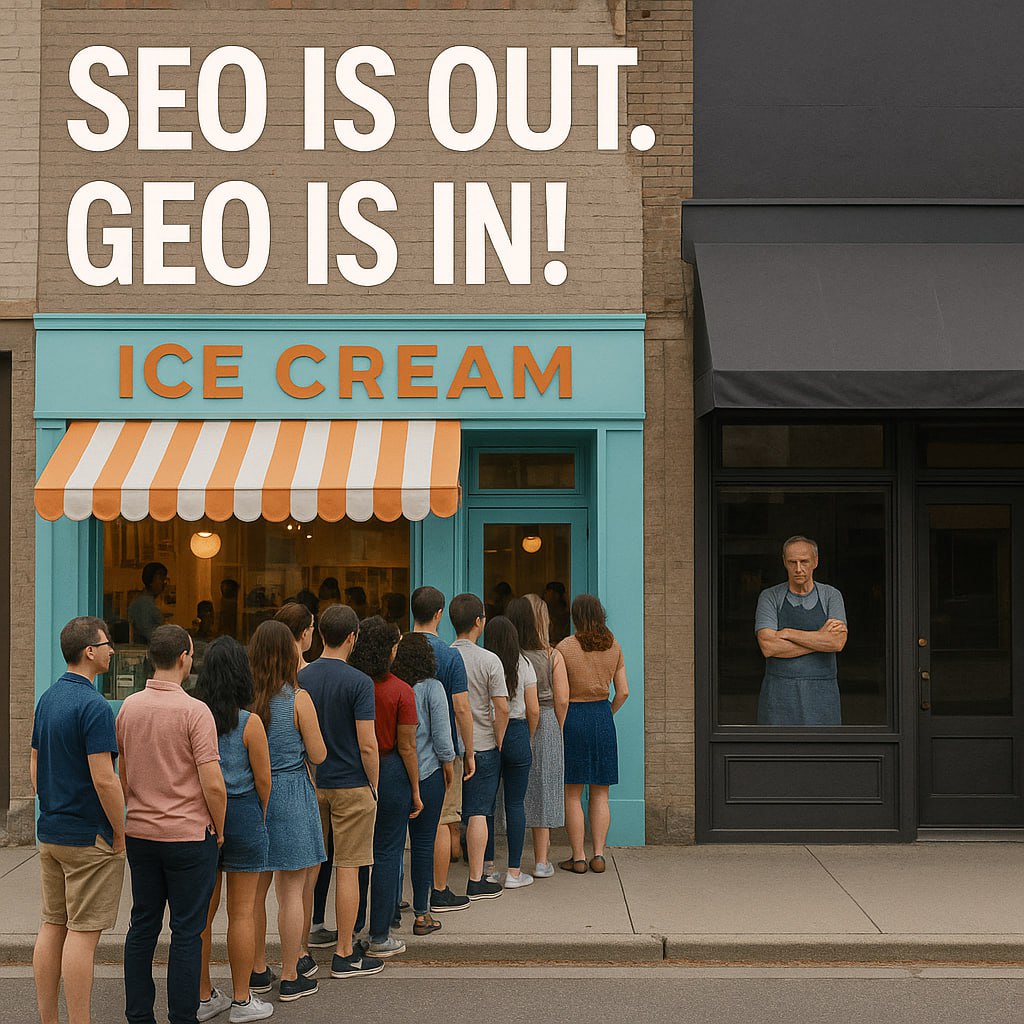SEO Is Out. GEO Is In.

Why Your Next Customer Might Find You Through ChatGPT, Not Google
Search is changing fast. If your marketing still revolves solely around search engine optimization (SEO), you're leaving a wide gap for competitors to fill. That’s because we’ve entered the era of Generative Engine Optimization (GEO), where your visibility in AI-powered tools like ChatGPT, Claude, Gemini, and even Google's AI Overviews matters just as much as, if not more than, traditional search rankings.
Let’s break down what that means and why it’s time for your brand to make the leap.
What Is GEO?
GEO (Generative Engine Optimization) is the practice of optimizing your digital presence so that AI models recognize, reference, and recommend your brand in generated answers, summaries, and search responses.
Unlike traditional SEO, which aims to climb the ranks on a search engine results page, GEO is about training the AI models to associate your business with trustworthy, relevant, and useful content so they surface it in answers to user queries.
GEO vs. SEO: What's the Difference?
| SEO | GEO | |
|---|---|---|
| Audience | Search engine crawlers | AI language models |
| Goal | Higher rankings in search | Inclusion in AI-generated responses |
| Content Style | Keyword-rich web pages | Context-rich, fact-based, structured |
| Metrics | Traffic, rankings, bounce rate | AI mentions, citations, visibility |
GEO isn't about gaming the system. It’s about becoming the source the system draws from.
5 Ways to Boost Your GEO Visibility
1. Audit Your AI Presence
Open ChatGPT or Google’s AI Overview and ask questions about your industry, service area, or even your brand name. Are you mentioned? If not, why not?
This helps you identify knowledge gaps and start crafting content that aligns with what AI is trained to surface.
2. Create Machine-Friendly Content
AI models love clarity. That means:
- FAQs written in plain language
- "What is" and "how to" blog posts
- Structured content like bullet points and headings
- Accurate, updated contact information and bios
The easier it is for AI to digest, the more likely you’ll be included in its answers.
3. Invest in Quality Backlinks and PR
AI tools pull from trusted sources. By being mentioned in reputable media, industry sites, and educational resources, your brand becomes more trustworthy in the eyes of the models.
This also includes third-party bios, guest posts, and citations in authoritative directories.
4. Unify SEO, PR, and Brand Messaging
GEO optimization is a team sport. Make sure your SEO team, content writers, and PR reps are aligned on:
- Brand voice
- Core messaging
- Target keywords
- Outreach strategy
This ensures your narrative is consistent across the platforms AI learns from.
5. Assign Ownership for GEO Strategy
Consider roles like:
- AI Visibility Strategist: Oversees how AI interprets and presents your brand
- Prompt Engineer: Creates custom AI prompts for internal and public use
- Reputation Manager: Monitors what AI and users are saying about your business
You don’t need a big team, just someone thinking about this.
Why GEO Matters for Small and Growing Businesses
Big brands will catch on eventually, but right now GEO is a wide-open opportunity for startups, service professionals, and small business owners to build strong AI visibility in their niche.
If your brand is local, highly specialized, or newer to the scene, then GEO could be your fastest path to authority in your space.
Ready to Be Found in AI Search?
If your business isn’t showing up in AI-generated answers, you’re missing out on the future of discoverability. GEO optimization is no longer optional. It is how smart brands stay ahead.
Let’s make sure your company is one of them.

No pressure. Just clear insight and actionable next steps.